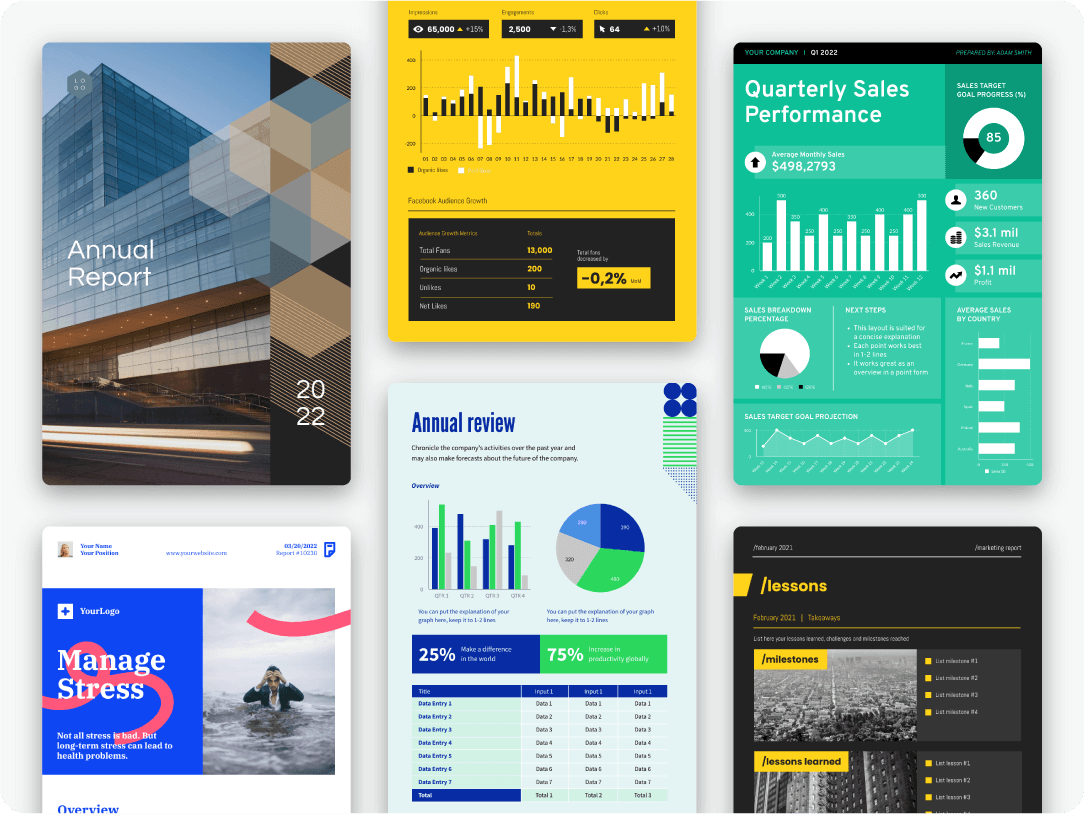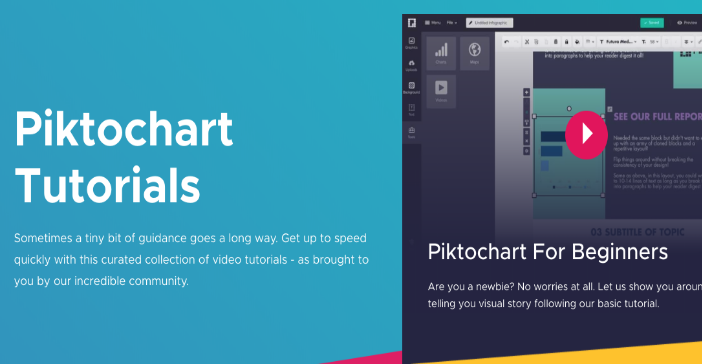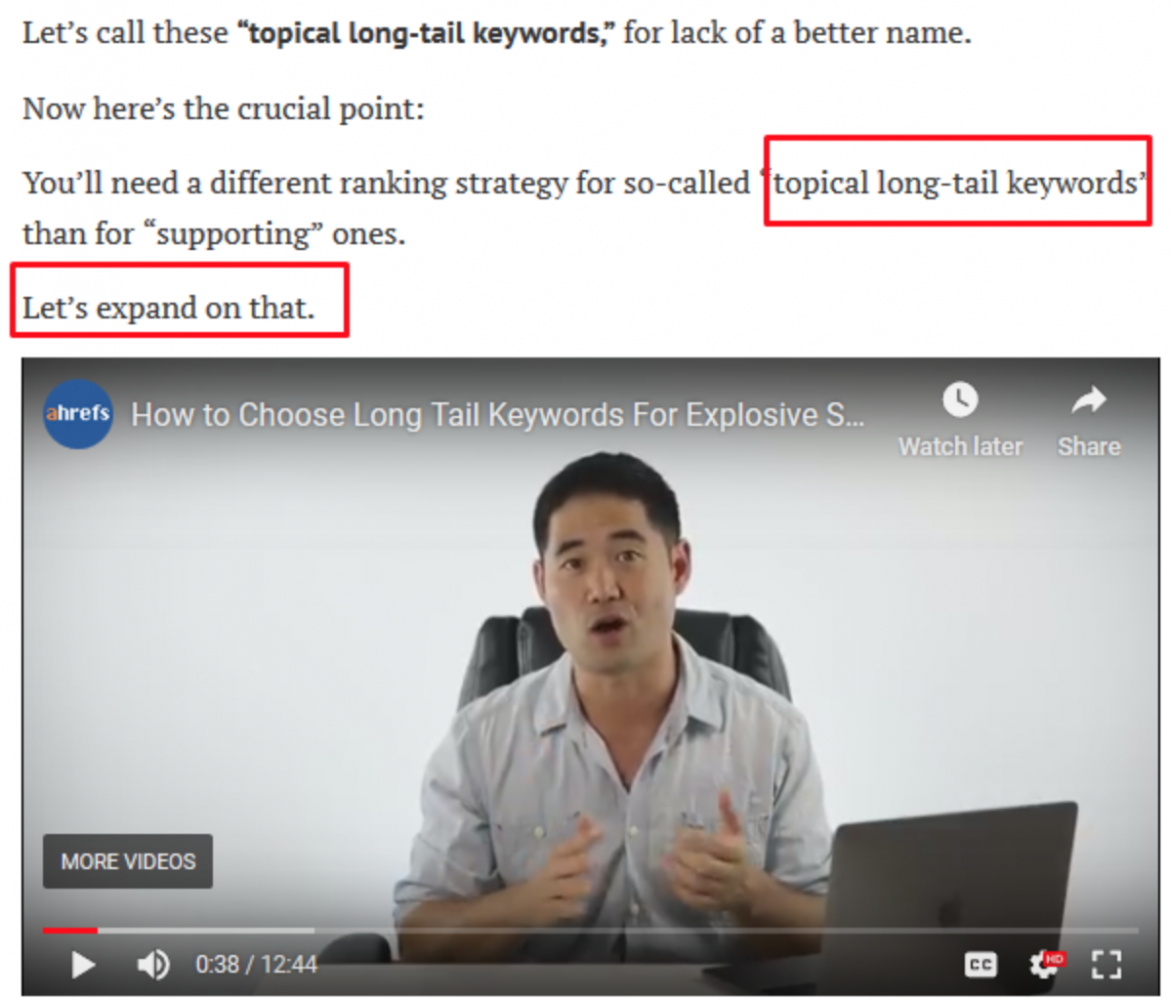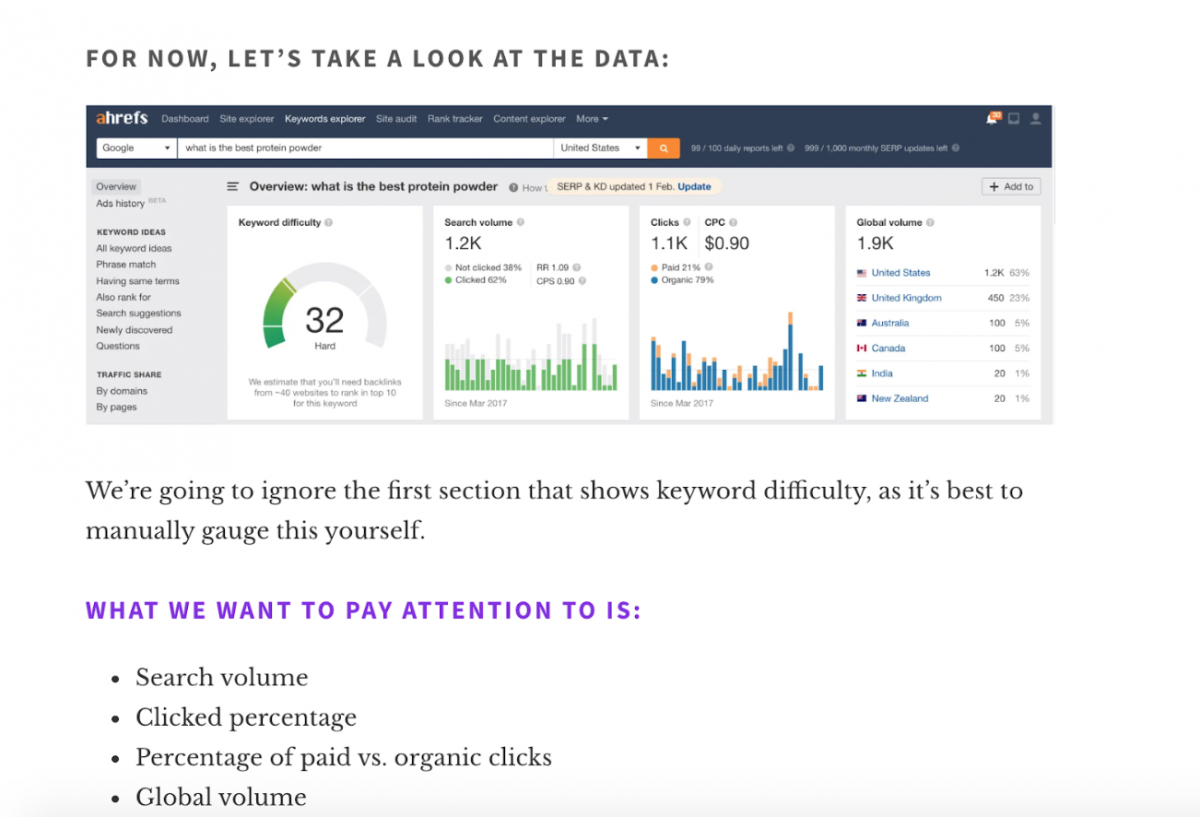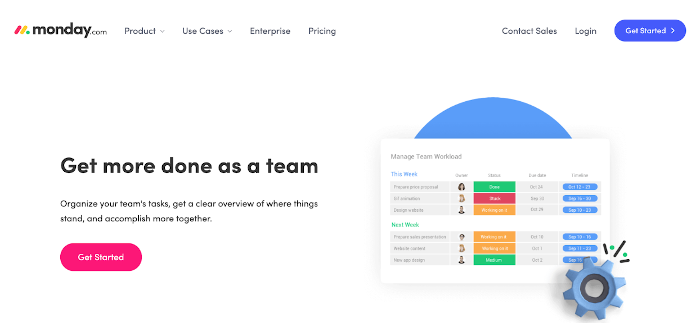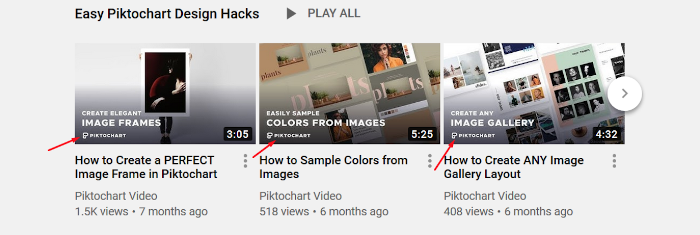Don’t you just hate it when you work hard to produce videos consistently only to find out that only less than half of your audience is watching them?
And when you look at your competitors, they seem to be doing just fine given that 45% of the global population consumes more than an hour of video content every day.
They’re even making sales through their video content since 50% of buyers watch a video right before they buy.
When you think that you’re doing everything right, it’s hard to figure out why your audience isn’t watching the videos you’re producing. So, here’s another way to look at it…
What else do you need to do with your videos to boost your audience reach?
Stick with me, because that’s what we’re going to talk about in this post. Let’s get started.
You could also jump right into creating content with Piktostory. Feel free to check out our templates for amazing presentations, reports, infographics, and more by signing up for free.
Create different types of video content
If you’re only producing one type of video content, your audience probably thinks you don’t have much to offer. They can still ignore you without losing anything.
In other words, they think you’re boring. Your audience wants to connect and interact with brands that produce a variety of content that appeals to different emotions because it keeps them engaged.
Besides, relying on one type of video content isn’t enough to meet the needs of your audience. And that’s why Piktochart has tutorials:
These tutorials are relevant to someone who knows that they need visuals such as infographics and wants to know how to create them. However, someone who doesn’t understand the power of visual content might ignore it because it’s not useful to them.
If you’re running specific social media campaigns, it’s important to remember that not all videos will be a good fit for that. No matter how great your video is, it will not work well on social channels if it’s too long or gets to the main point halfway through. Viewers’ attention span is short and on social media people want to see the value, or main points, fast.
Piktostory is a great example of a video tool that’s specifically created for video content repurposing:
It will easily turn 1 video into multiple bite-size clips ready to be shared on social media.
As you think of the next video you’re going to produce, take a moment and think about your audience.
What kind of videos will help them solve the different problems they are struggling with? Product reviews and demos? Expert interviews? Tutorials? Brand videos? Once you identify these types of video content, go ahead and create them.
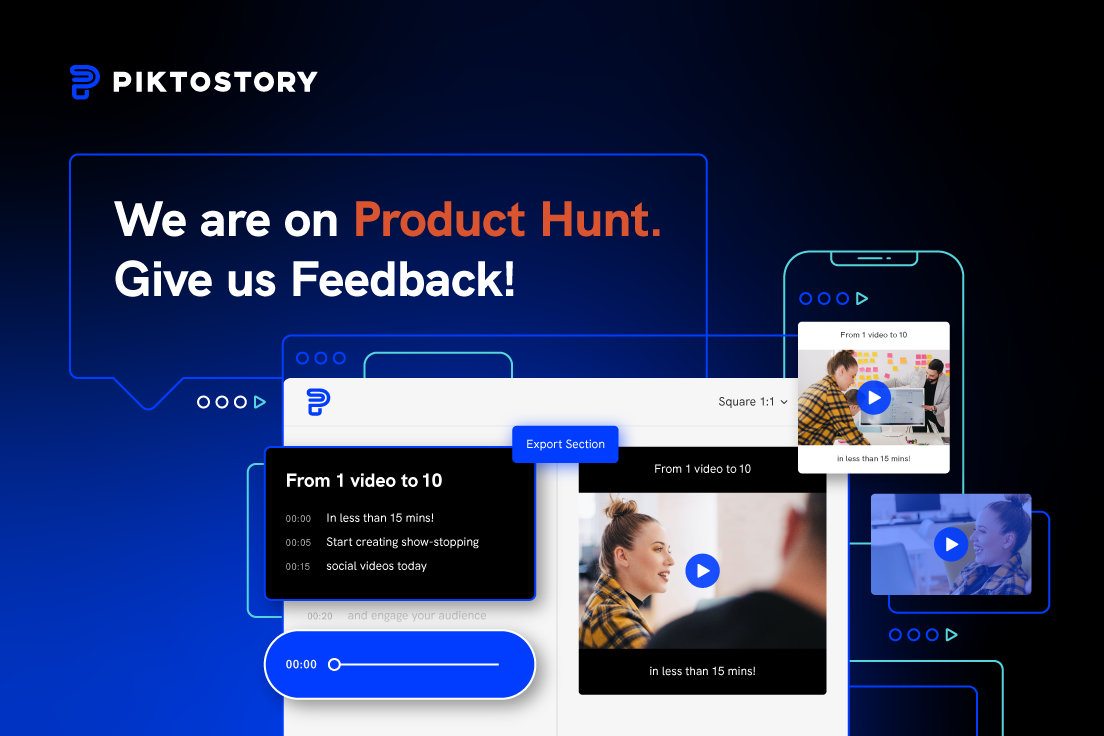
Include your videos in blog content
So I’m guessing you’ve already started a blog by this point, and if you haven’t, then definitely check out my extensive guide on starting a blog.
But for now, I want you to forget everything you know about blogging and read this next section with an open mind.
As you create different types of videos for your business, you need to spice up your blog posts with video content. Ever read a blog post that left you with questions, wishing that there was someone to explain more so you understand what you were reading?
You were left, putting together ideas and struggling to implement what you just learned.
I’ve been there too, and I know how frustrating it is.
65% of your readers are visual learners. Readers appreciate comprehensive content because they don’t want to keep looking for answers to their questions or solutions to their problems.
The more information you have in your blog posts (including video content), the easier it is for you to get more readers and expand your reach. Let’s see exactly how this works on Ahrefs’ guide on Long-Tail Keywords.
In this guide, they’ve introduced a new term: topical long-tail keywords, which, if you’re new to keyword research, then you might get stuck, wondering what it means.
And that’s why they have included a video to explain what it means:
This video keeps readers engaged because it helps them understand what they are learning by explaining concepts in a relatable manner. Readers will spend more time on the site reading and watching videos and reading content leading to an increase in dwell time.
Increased dwell time on a site is a signal to Google that the content is relevant and useful, meaning that it deserves to rank at the top of the search engine results for the target keyword. And the best part about this is that top search engine results get 95% more click-through rates from searchers, so you’re guaranteed that more people will click through and watch the videos on your blog posts.
On the flip side, one could take a long-form blog post like this one on doing keyword research for e-commerce SEO from Hailey Lucas and turn it into a tutorial video:
This blog post is over 3,000 words and includes a lot of subheadings that would be great for walk-through video tutorials. Best of all? By uploading them to YouTube and optimizing the videos for SEO, you can even gain some additional traffic to your site!
If you’re wondering the easiest way to get started with this, consider turning existing blog subheads into individual videos, or even having someone review your product or service. For example, on this guide from Zoma Sleep Mattresses, they could create videos for the most common mattress types by highlighting the differences through captivating visuals in a video to help readers understand. They also have people review their products directly on YouTube.
Another subhead from the guide that would make a great video would be “What is the Best Mattress by Body Type?”. Here, an animated video would help readers know the type of mattress that fits their body type.
This can literally be implemented for any business, whether you’re offering products or services, or even if you’re an affiliate marketer who’s promoting other people’s products and services.
Take Cooltechzone, for example, who frequently blogs about the best VPN services. If you check out their blog, you’ll find lots of VPN review blog posts. However, they aren’t the ones actually providing the service. They simply provide unbiased reviews.
This type of content is perfect for creating comparison videos and even showing walkthroughs on how to use and set up the different VPNs like NordVPN or IPVanish.
My challenge for you is to take a look at the videos you already have. Where can they fit in the blog posts you have published? If none of them fit in your blog posts, then look at the popular blog posts you have and turn some of the subheads into videos.
If you don’t have any video content, then examine your blog or other written or audio content. What content do you have that could be turned into a video?
Optimize your videos
Sometimes you don’t need to focus your time and resources on producing more videos. Instead, focus on optimizing what you already have. You already know where your audience hangs out on social media, and you’re posting your videos there. So, looking at the videos you post on these platforms, do you optimize them to make it easy for more users to watch them?
Take Facebook, for instance. The social media experience is largely a silent one, where users scroll with minimal interruptions.
85% of users on Facebook have muted their videos. If you haven’t optimized it for their experience, they will scroll past them because audios interrupt their experience. Add subtitles to your Facebook videos to make it easy for more users to consume your video content and expand your reach on these channels.
In fact, Adespresso conducted a study comparing the effectiveness of video subtitles in video ads to a cold audience. Videos with subtitles had a 26% higher click-through rate, compared to the clicks that videos with no subtitles received.
Another way to boost your audience reach is through optimizing your videos for local search through video citations. Recent Google updates have included local search as a ranking factor. Businesses which provide accurate information about their names, address, and phone numbers are showing up at the top of local search results.
In addition to having citations in business directories, social media, and photographs, the experts at Loganix explain why you need a video citation:
“Video citations give your citation profile the variety it needs, and allow you to appear for video searches for your business information.”
And if you don’t have a video to boost your local search results? Powtoon comes in handy by helping you create one, then add your business details and submit it to top video sites such as YouTube.
Finally, if you have the resources, the optimal video strategy includes lots of structured experimentation. A/B testing something small might lead you to your next big breakthrough.
Use the right equipment
Have you ever come across a video whose audio quality, visuals, or even lighting was too bad that no matter how much you wanted to watch it, you couldn’t do it?
The content might have been great, but the equipment used to shoot and record the video messed up with its quality. When you’re producing low-quality videos, it’s hard to boost your audience reach because you can’t get hold of their attention. Your audience will ignore you.
Does your camera shoot videos at 60 frames per second at 1080 pixels to give you high-quality visuals? Does it have a flip-out screen that allows you to see what it is recording to help you capture all the details you need? Does your camera’s lenses have a wide-angle to capture wide views?
What type of microphones are you using? If you’ve struggled with improving your audio quality, your best bet would be checking out podcast microphone recommendations.
Sounds counterintuitive, but podcasting is an audio-based channel. Audio quality determines how well the show performs, so checking out the microphones used in podcasts will put your miles ahead in terms of audio quality in your videos.
And since the devil is in the details, your raw video footage needs splicing, trimming, and editing to improve the quality of your videos for clarity and flow. Your video editing software should offer maximum flexibility and speed without burning a hole in your pocket.
If you’re not getting these from what you’re using right now, isn’t it about time you chose a video editing software that lets you have your cake and eat it?
Use video in your sales funnel
If you’re using inbound selling as one of your strategies to get more leads and customers, then your sales funnel starts in the awareness stage. Your prospects hear about you from friends, see your ads on social media, or you appear at the top of their search engine results. They then visit your website to learn more about their problems and the solutions you provide.
The content you use in the awareness stage will affect your conversion rates because the more people consume it, the easier it is to convert them into subscribers and leads.
Whether on your homepage, on YouTube, or within a landing page, If you don’t post videos then you’re limiting your reach and losing out on leads.
How do you nurture the leads you get and keep your customers engaged? Are you struggling to get your subscribers and leads to learning more about you?
Include your branding video (or a link to the video) in your toolkit and funnel to start using it as part of your welcome email series then use a sales automation tool to deliver these emails.
In addition to helping you build brand intimacy with them, you make sure that everyone who signs up for your lead magnets and newsletters watches it.
When running an email campaign to convert your leads into your customers, increase the number of people who attend your webinars through creating a pre-webinar series. It helps build up excitement before you host the webinar and it boosts conversions. Be sure to check out my guide on choosing webinar software for an in-depth guide on the technicalities.
Set up drip campaigns via recurring automated emails where you send these videos in a multi-part series.
With each follow up email, send the next part to build suspense and drive more traffic to your video content and finally to the webinar you host.
This way, you’re able to increase the reach of your videos by allowing more of your subscribers to watch and convert into leads and customers. For more on driving sales with webinars, check out this post from GetVoIP.
Brand consistently
Every minute, more than 500 hours of video content are uploaded on YouTube. And it is hard to stand out and have more people watch your videos if your audience cannot recognize your videos once they see them.
Your visual and audio elements in the videos you create reveal your brand personality and if they’re consistent, your audience will be watching the videos you post.
Buyers stick with predictable brands and connect with them because it’s easy to recognize them. It’s also easier to form a brand perception through these elements, helping you influence how your audience thinks about your brand and the products and services you sell.
Take Monday.com, for example, a popular team management tool:
Everytime I see these bright colors with a minimalistic essence, I automatically know it’s Monday’s branding. It stands out to me because they’re consistent.
To achieve branding consistency, use brand colors in your videos and your logo to help your audience know that it’s you. Take a look at how Piktochart has done it in their YouTube videos:
Also, ensure that your outros and intros are similar to make it easy for your audience to know that they are in the right place.
Going back to Piktochart’s tutorials above, each of these tutorials has a similar intro and outro, with similar visuals and audio elements. A viewer who has watched this before has connected with them, so they just ease into the video to consume the content without having to check and confirm that this is still Piktochart.
Tell stories
The urge to focus make your videos all about your brand is irresistible but invoking the power of stories will boost your reach and improve brand awareness. Stories evoke our emotions and help us understand and remember information.
Storytelling in your videos shouldn’t be hard. Choose one storytelling archetype then use it to tell your story. In our example above, Nike uses “The Journey,” inviting us to share in their quest to pursue dreams that start a million more dreams.
Let’s say you’re a company like Beaconstac who helps business owners automate QR code creation.
Telling stories could be as simple as sharing the transformations of the lives you’ve changed. With Beaconstac, they could feature customer success stories about how they’ve automated many of the mundane tasks for business owners by sending documents via QR codes.
What stories can you tell in your own business? Whether it’s taking a stand on an important social issue or sharing stories of your customers, there’s always a story to be told.
Over to you
Creating videos is hard work. And you can make it harder by ignoring the things you should be doing to help you get results from your efforts. So, looking at what we’ve just covered, what aren’t you doing in your video content marketing efforts that are denying you the audience reach you deserve?
Let’s do a quick recap on what we’ve discussed:
- Creating different types of video content?
- Including videos in your blog posts?
- Optimizing your videos?
- Using the right equipment?
- Using video in your sales funnel?
- Are you branding your videos consistently?
- Are you telling stories?
If there’s something in this list that you’re not doing, start working on it to create better videos that people want to watch and share. In a month or two, you’ll see your audience growing, get more leads, increase your conversions and outdo your competitors. And isn’t that what you want?
Piktochart offers professional templates to create amazing presentations, reports, infographics, posters, flyers, and social media graphics. Sign up for free.
Show your progress with professional visuals.
Make presentations, reports, infographics, and more.
Sign up for free